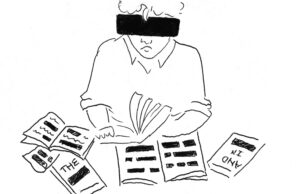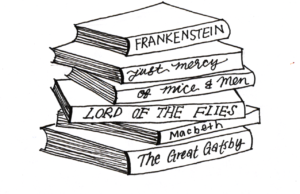Twihards Unite: Genderbent Twilight is Worthy of Attention
There’s no point in denying it; as soon as I tore through the Twilight series in junior high, I was the ultimate Twihard. For those who are less knowledgeable of the darker sides of preteen woe, a Twihard is someone who is obsessed with Twilight. After reading all of the books multiple times (I would be lying if I said I haven’t spent one or two of my more lonely high school nights tearing up over them), I never expected this: a genderbent version of one of the most judged, hated and shamed books to grace shelves everywhere.
In Stephenie Meyer’s Life After Death, a twisted version of Twilight, all of the original character’s genders, no matter how seemingly insignificant their role in the book is, are reversed to prove Meyer’s long-argued point that the first-love obsession between Bella and Edward doesn’t have anything to do with their respective genders. To better work with this point, Meyer uses almost exactly the same manuscript from the original book, only switching the genders, names and occasional small details, with one massive exception. I was skeptical from the start, but my suspicions shifted into a mixture of awe and nostalgia as I, once again, tore through the pages.
A few key points stuck out to me. Firstly, whether or not it had anything to do with their genders, Edythe and Beau (aka Edward and Bella) had some interesting character changes that made them both more likeable yet more naive than in the original Twilight series. As for Beau’s personality, in Life After Death he was sweeter, less angsty, and better at making friends, whereas Edythe was less mysterious and cold and more outgoing, spunky, emotional and almost served as a manic pixie dream girl type figure. (Manic pixie dream girl: a woman love-interest in a book or movie that is solely there to teach a man to embrace life’s mysteries and adventures.) Having her come off this way wasn’t as off-putting as I expected, mostly because while I thought it would mix badly with her vampire-traits and personality, it was easy to forget she was a vampire. In fact, it was easy to forget they were in a supernatural relationship at all, as Beau had less of interest in Edythe’s vampire life and more of an interest in actually getting to know her, while Edythe seemed to fall more for Beau as an equal rather than the relationship feeling unequal. It read more like obsessed, naive teenagers experiencing the craziness of first love than a story of a vampire and human entering into a dangerous, unpredictable realm of romance.
Although there were several small changes detailed that seemed gender-related, they weren’t done in a way that made me want to light my book on fire, but actually helped carry the new design of the story along more fluently. For example, Beau seems way more infatuated with Edythe’s beauty than Bella was with Edward’s, and whether Meyer meant this as a poke at stereotypes of how males view females, it worked with the idea of young, teenage love taking over all the hormones, and made the story slightly more believable. A lot of gender stereotypes, especially about female strength and boys making the first move, were challenged by Meyer’s will to keep the same story points, meaning that girls were asking out Beau left and right while Edythe was throwing around cars and crushing bad guys. It was refreshing, except for when Meyer would shine a huge spotlight on these situations to specifically show that it was a reverse of gender roles and virtually give herself a pat on the back for intentionally writing it that way. We love the more dynamic, less-stereotyped roles, but by pointing out these shifts whenever they happen, it discredits the characters and instead just focuses on the modernizing of it all, therefore circling it back to being about gender roles rather than the meanings behind their actions.
Towards the end of Twilight, there is one specific choice that is made in a specifically stressful scene (Twihards will get me) that is reversed completely in Life After Death, bringing us to an alternative ending from the original story that is both better and worse. I won’t give anything else away, but Life After Death is without a doubt an intriguing, heartfelt read that will make you see the Twilight saga in a new light. It’s also an excuse to be obsessed with Twilight again for a little bit, which is definitely a bonus for those of us who have remained in the Twilight closet since 6th grade.




1 Comment